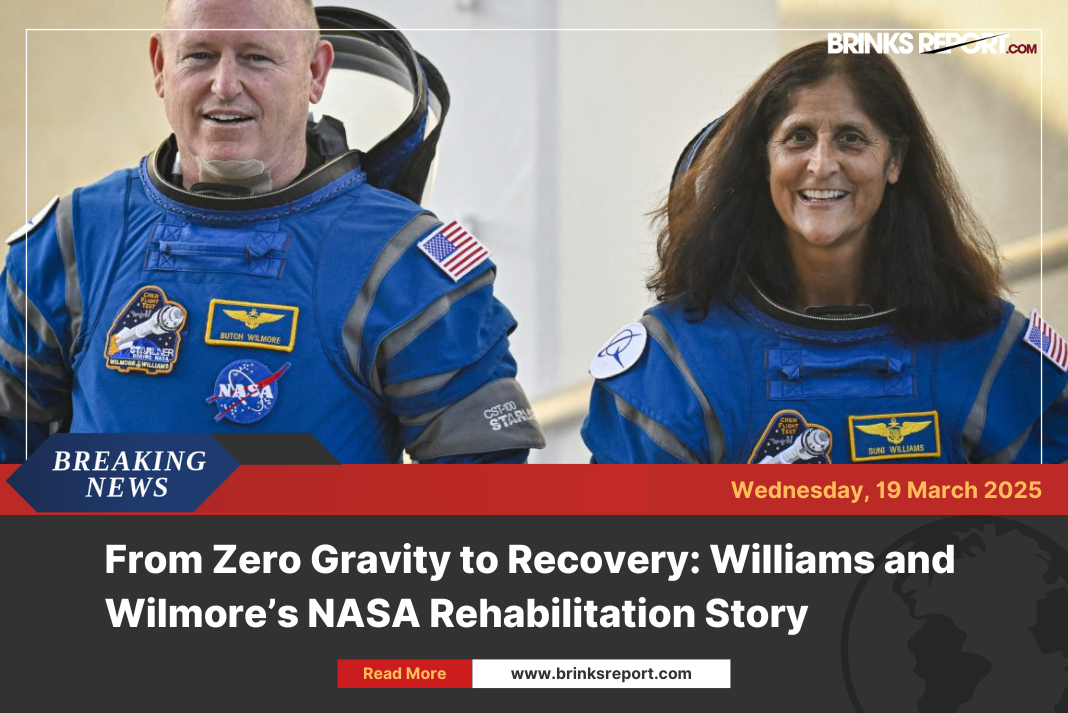
The Journey Back to Earth: NASA’s Rehabilitation Program
Imagine floating in space for months, far from the pull of Earth’s gravity. Now, picture returning home—only to feel like a stranger in your own body. This is the reality for astronauts like Williams and Wilmore, who face a challenging transition after their space missions.
To help them recover, NASA has developed a rehabilitation program—a lifeline that ensures astronauts can readjust to life on Earth. Let’s dive into this fascinating process and see how it works.

Why Is Rehabilitation Necessary?
Space is no ordinary environment. Without gravity, the human body undergoes significant changes. Muscles weaken, bones lose density, and even the circulatory system is affected. When astronauts return to Earth, they often struggle with balance, strength, and coordination.
But it’s not just physical. The isolation and confinement of space can take a toll on mental health. Astronauts may experience stress, anxiety, or even a sense of disconnection from life on Earth.
That’s where NASA’s rehabilitation program steps in. It’s a carefully designed plan to help astronauts recover both physically and mentally.
What Does the Program Include?
The program is tailored to each astronaut’s needs, but it generally includes four key components:
- Physical Therapy:
Astronauts work with trainers to rebuild muscle strength, improve flexibility, and regain balance. Customized exercises help them recover from the effects of zero gravity. - Mental Health Support:
Counseling sessions and psychological evaluations are a crucial part of the program. These help astronauts process their experiences and cope with the emotional challenges of returning to Earth. - Lifestyle Adjustments:
After months in space, even simple tasks like walking or standing can feel strange. The program helps astronauts readjust to Earth’s gravity and daily routines. - Monitoring and Evaluation:
Throughout the six-week program, astronauts are closely monitored to ensure they’re recovering well. Any issues are addressed promptly to support their overall well-being.
Why Does This Matter for the Future?
As NASA plans for longer missions to the Moon, Mars, and beyond, understanding how the human body adapts to space—and how it recovers—is more important than ever.
The rehabilitation program isn’t just about helping astronauts today. It’s about paving the way for the next generation of space explorers. By studying how astronauts recover, NASA can develop better strategies for long-term space travel.
A Story of Resilience
Astronauts like Williams and Wilmore are true heroes. They brave the unknown, push the boundaries of human capability, and return home to face a new set of challenges. But with NASA’s rehabilitation program, they’re not alone.
This program is a testament to NASA’s commitment to its astronauts. It’s a reminder that space exploration isn’t just about technology and science—it’s about the people who make it possible.
FAQs
- What is the main goal of NASA’s rehabilitation program?
To help astronauts recover physically and mentally after space missions and readjust to life on Earth. - How long does the program last?
Typically six weeks, but it can vary depending on the astronaut’s needs. - What are the key components of the program?
Physical therapy, mental health support, lifestyle adjustments, and continuous monitoring. - Why is this program important for future missions?
It provides insights into how the human body adapts to space, helping NASA prepare for longer missions to the Moon, Mars, and beyond.
NASA’s rehabilitation program is more than just a recovery plan—it’s a bridge between the stars and Earth. By supporting astronauts like Williams and Wilmore, NASA ensures that they can continue to explore the cosmos and inspire us all.
After all, their journey back to Earth is just as important as their journey to the stars.
Also Read: What’s Blue Ghost Doing on the Moon? The Secret Behind Its Groundbreaking Soil Experiment!












